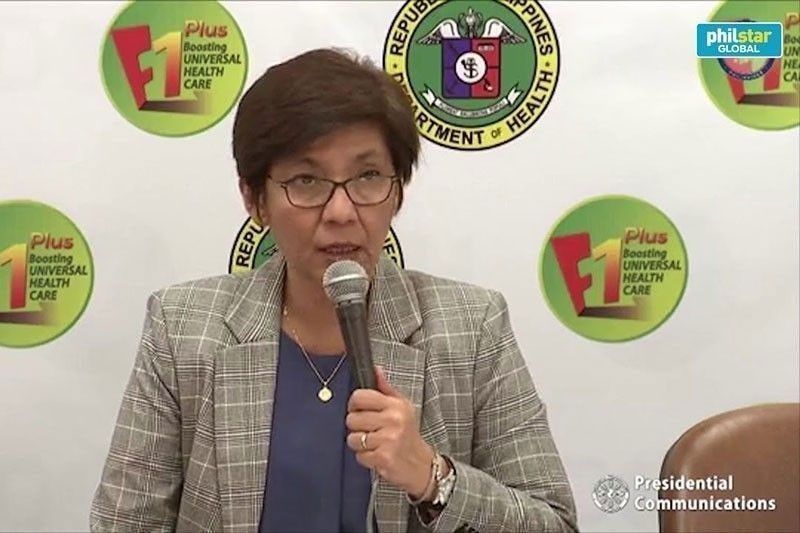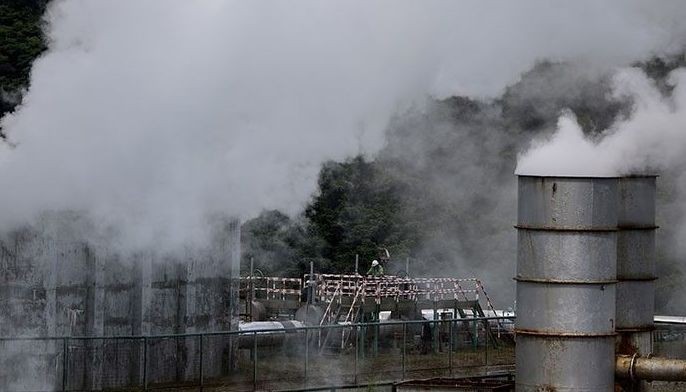Public alerted on ‘artificial rise’ in COVID cases

MANILA, Philippines — The Department of Health (DOH) yesterday alerted the public on the possible “artificial rise” of new cases of coronavirus disease 2019 (COVID-19) as swab test results of overseas Filipino workers (OFWs) started to come out.
According to DOH Undersecretary Maria Rosario Vergeire, there has already been an increase in the number of cases last May 26, due mainly to the tests results of OFWs included in the department’s data system.
“Let’s expect in the coming days, we will see more cases coming in from among the OFWs tested. Our data will increase,” she told the virtual Kapihan sa Manila Bay media forum.
As of yesterday, the DOH had recorded 380 new cases of COVID-19, raising the total to 15,049, of which 10,639 are “active cases.”
For the past two months, the agency was documenting only around 200 cases daily. But starting May 6, the number of new cases suddenly exceeded 300, even going up to 350.
But Vergeire clarified that not all of these new cases were OFWs, although they were significant contributors.
Many of the seafarers have been in quarantine for more than one month although their required isolation period was only 14 days.
Data show there were 18 new fatalities, bringing the death toll to 904 while the number of recoveries increased to 3,506 due to 94 patients who overcame the virus.
Vergeire noted there are now 44 sub-national testing laboratories of the DOH after two more facilities were licensed Tuesday night.
“Our actual capacity is averaging 8,500 to 9,500 tests. Our estimated (overall) capacity is 32,000. When we give license to a laboratory, we look at the capacity of a laboratory based on the machines, number of health human resources and their operating hours,” she added.
The DOH computes this to determine a laboratory’s minimum and maximum capacity. A capacity will then be set which becomes the target of a certain facility.
The DOH met with laboratory operators on Tuesday as the agency observed a “downward trend” in their capacity.
She said one of the main issues is the lack of supplies in the past days and some infrastructure problems. For instance, the exhaust system of the laboratory at the University of the Philippines stopped, prompting the facility to cease operations.
Typhoon Ambo had also caused damages at the Bicol Regional Diagnostic and Reference Laboratory and at the Philippine Red Cross laboratory.
To scale up the testing processes, Health Secretary Francisco Duque III has instructed eight private laboratories to operate even on Sundays.
Vergeire added if the laboratories need to disinfect, this should be done during breaktime or the lull in their processing.
The DOH is hiring some 95 contact tracers to fortify its COVID-19 response, Vergeire said.
She said they currently have 35,000 contact tracers but this is not enough to effectively track down individuals who could have interacted with those infected with COVID-19.
“We will be asking the help of the local government units to find contact tracers. Based on standards, there must be one contact tracer for every 800 population,” she noted.
Vergeire said the DOH will be coming out with “minimum qualifications for contact tracers in the coming days so the LGUs can start hiring them.”
Vaccines
The bidding for procurement of anti-pnuemonia pneumococcal conjugate vaccine (PCV) remains on hold as the DOH Health Technology Assessment Council (HTAC) is still evaluating two vaccines.
Vergeire said the department decided to stop the bidding and let the HTAC look into the cost-effectiveness and safety of PCV10 and PCV13.
The council will then make a recommendation to the DOH on which brand of PCV should be procured for its Expanded Program on Immunization.
“Their recommendation is not yet out but we assure the budget is still intact. We are just waiting for the recommendation,” Vergeire added.
Quezon Rep. Angelina Tan, House health committee chair, said the DOH should wait for the HTAC evaluation.
“If the HTAC says that both vaccines will be beneficial for us, then they are both (beneficial). It should go through competitive bidding. Actually HTAC is a good process. It’s a safeguard put in place in universal heath care. Let’s wait for its recommendation,” she maintained.
In November 2019, the DOH decided to stop the bidding for procurement of PCV 13, which is manufactured by pharmaceutical company Pfizer.
This is due to the manifestation of another pharmaceutical, GlaxoSmithKline (GSK), that their PCV10 is also a viable option for DOH.
However, PCV10 is not included in the government’s Philippine National Drug Formulary (PNDF) aimed to “make quality essential drugs available, accessible, efficacious, safe and affordable.”
The PNDF contains the list of essential medicines prepared by National Formulary Committee (NFC) in consultation with experts and specialists from organized professional medical societies, medical academe and the pharmaceutical industry.
As a policy, government agencies must procure medicines that are in the PNDF list.
- Latest
- Trending





























